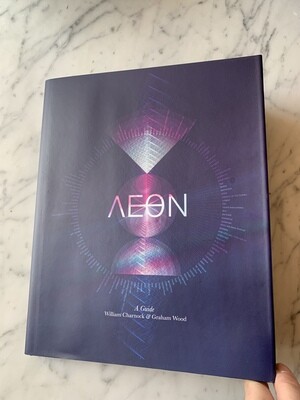Let us consider this. What about this "likeness"? Moses informs us (Gen. 5:3) that Adam begat a son in his own image and likeness. You would not say the word "likeness" means that Seth was, in any wise, different from Adam.
There is the word "image". Suppose the word "image" had been used in this remark of Paul's: "sent His Son in the image of the earthy nature". We should then have had this argument — "Ah, you see it is only the image; it is not the nature itself". Whereas, Paul says concerning ourselves in 1 Cor. 15:49: "We have borne the image of the earthy, and shall also bear the image of the heavenly". Shall we say we have not borne the earthy? Do not we bear the earthy? Yes. Therefore in apostolic language "earthy" and "the image of the earthy" mean the same thing. Upon the same principle, sinful flesh and the likeness of sinful flesh mean the same thing.
The truth of the matter does not depend upon the word "likeness" or any other single term, but upon the combination of statements made — which are all in language plain enough to be free from obscurity. At the same time, it has to be pointed out that the word "likeness" in the Greek has the force of resemblance so complete as to be sameness. This is illustrated in the statement that Jesus was made in "the likeness of men" (Phil. 2:7). The extent of the likeness is defined as extending to "all points" and "all things" (Paul's words — Heb. 2:17; 4:15). What can we say but that he was a man, and not the mere likeness of a man
Question How could Jesus have been made free from that sin which God laid upon him in his own nature, "made in the likeness of sinful flesh," if he had not died for himself as well as for us?
Answer: He could not.
Furthermore, they will say of him that he is unbegotten, though he has been begotten, (that) he does not eat, even though he eats, (that) he does not drink, even though he drinks, (that) he is uncircumcised, though he has been circumcised, (that) he is unfleshly, though he has come in the flesh, (that) he did not come to suffering, <though> he came to suffering, (that) he did not rise from the dead, <though> he arose from the dead. (The Nag Hammadi Library Melchizedek)
Here is a fragment from Basilides addressing this question. It demonstrates that early Christianity could have no qualms about attributing a deficit of goodness to Jesus while he was in the flesh:
Basilides, in Book 23 of his "Commentaries," writes
{Then, farther along, he adds:} A new-born baby, then, has never sinned before; or more precisely it has not actually committed any sins, but within itself it has the activity of sinning. Whenever it experiences suffering, it receives benefit, profiting by many unpleasant experiences. Just so, if by chance a grown man has not sinned by deed and yet suffers, he suffered the suffering for the same reason as the new-born baby: he has within him sinfulness, and the only reason he has not sinned (in deed) is because he has not had the occasion to do so. Thus not sinning cannot be imputed to him. Indeed, someone who intends to commit adultery is an adulterer even without succeeding in the act, and someone who intends to commit murder is a murderer even without being able to commit the act. Just so, if I see the aforementioned sinless person suffering despite having done no wrong, I must call that person evil by intent to sin. For I will say anything rather than call providence evil.
Nevertheless, let us suppose that you leave aside all these matters and set out to embarrass me by referring to certain figures, saying perhaps, "And consequently so-and-so must have sinned, since he suffered!" If you permit, I shall say that he did not sin, but was like the new-born baby that suffers. But if you press the argument, I shall say that any human being that you can name is human; God is righteous. For no one is pure of uncleanness, as someone once said. (Clement of Alexandria, Miscellanies 4.81.2-4.83.2)
Here it seems Basilides is referring to the suffering of Jesus and quotes from the book of Job chapter 14 to show that Jesus did not sin but had our unclean human nature
Sin, I say, is a synonym for human nature. Hence, the flesh is invariably regarded as unclean. It is therefore written, "How can he be clean who is born of a woman?" (Job 25:4) "Who can bring a clean thing out of an unclean? Not one." (Job 14:4) "What is man that he should be clean? And he which is born of a woman that he should be righteous? Behold, God putteth no trust in his saints; yea, the heavens are not clean in his sight. How much more abominable and filthy is man, who drinketh iniquity like water?" (Job 15:14-16) This view of sin in the flesh is enlightening in the things concerning Jesus. The apostle says, "God made him to be sin for us, who knew no sin" (2 Cor. 5:21); and this he explains in another place by saying, that "He sent his own son in the likeness of sinful flesh, and for sin, condemned sin in the flesh" (Rom. 8:3) in the offering of his body once (Heb. 10:10,12,14). Sin could not have been condemned in the body of Jesus, if it had not existed there. His body was as unclean as the bodies of those for whom he died; for he was born of a woman, and "not one" can bring a clean body out of a defiled body; for "that", says Jesus himself, "which is born of the flesh is flesh" (John 3:6). (Elpis Israel)
1Peter 1:19 but with precious blood, as of a lamb unblemished and spotless, the blood of Christ.
Fragment 10, on John 1:29 (In John 1:29, “The next day he saw Jesus coming toward him, and said, ‘Behold, the Lamb of God, who takes away the sin of the world!’”) John spoke the words, "Lamb of God" as a prophet, but the words, "who takes away the sin of the world" as more than a prophet. The first expression was spoken with reference to his body, the second with reference to Him who was in that body. The lamb is an imperfect member of the genus of sheep; the same being true of the body as compared with the one that dwells in it. Had he meant to attribute perfection to the body he would have spoken of a ram about to be sacrificed. (Heracleon: Fragments from his Commentary on the Gospel of John)
The lamb is a symbolic representation of the human nature assumed by Christ and subsequently sacrificed at the crucifixion
Heracleon also suggests that the phrase "lamb of God" refers to the physical form (body) of the Saviour, while the phrase "who takes away the sin of the world" indicates the being dwelling in that body the logos. The imperfection of the lamb in relation to other members of its species is relative to the imperfection of the body that harbours a perfect being such as the logos
The imperfection of the lamb does not reflect the perfection of the saviour's body in other words the body of the saviour does not have an immaculate nature.
God "sent forth His Son made of a woman made under the law" (Gal. 4:4). Being made of a woman, he was of our nature -- our condemned and weak and mortal nature: but being begotten of God and not of man, he 13 was in character spotless "holy, harmless, undefiled, separate from sinners". Sin had hold of him in his nature, which inherited the sentence of death from Adam: but it had no hold of him in his character: for he always did those things that were pleasing to his Father.
the character of Jesus was holy, harmless, undefiled, without spot, or blemish, or any such thing; but his flesh was like our flesh, in all its points—weak, emotional, and unclean. Had his flesh been like that of Angel-Elohim, which is consubstantial with the Eternal Spirit, it would have been unfit for the purpose of the Deity in his manifestation. Sin, whose wages is death, had to be condemned in the nature that had transgressed; a necessity that could only be accomplished by the Word becoming Adamic-Flesh, and not an immaculate nature.
Jesus became closely identified with humanity by taking on a human body. His human body is seen as consubstantial with the Church.
Jesus' baptism and the descent of the "Spirit" is his redemption (Gospel of Philip 70:34-36). Redemption was necessary even for Jesus so that "he might not be detained by the thought of the deficiency in which he was placed" (Excerpts of Theodotus 22:7 cf. also Tripartite Tractate 124:31-125:11). This is the true "virgin birth" and resurrection from the dead, for he was reborn of the virgin Spirit (cf. Gospel of Philip 70:34-71:7, Refutation of Heresies 35:5, Gospel of Philip 56:15-18).
Hebrews 5:7 Who in the days of his flesh, having offered up both supplications and entreaties to him who was able to save him out of death, with strong crying and tears; (and having been heard because of his piety
he emitted himself and he relinquished his majesty, taking scorn in exchange for the name. For our sake he endured the scorn. he appeared in flesh. And the humiliated one has no equipment. He has no need of the glory that is not his; he has his own glory with the name, which is the Son. Now he came that we might become glorious through the humiliated one that dwells in the places of humiliation. And through him who was reproached we receive the forgiveness of sins. And through the one who was reproached and the one who was redeemed we receive grace. (The Interpretation of Knowledge)
He included himself in the living offering, together with your offspring. He offered them up as an offering to the All. For it is not cattle that you will offer up for sin(s) of unbelief, and for the ignorances, and (for) all the wicked deeds which they will do [...]. And they do not reach the Father of the All [...] the faith ...... (20 lines unrecoverable)
... (2 lines unrecoverable)
... is the sacrifice of [...], whom Death deceived. When he died, he bound them with the natures which are leading them astray. Yet he offered up offerings [...] cattle, saying, "I gave them to Death, and the angels, and the [...] demons [...] living offering [...]. I have offered up myself to you as an offering, together with those that are mine, to you yourself, (O) Father of the All, and those whom you love, who have come forth from you who are holy (and) living. And <according to> the perfect laws, I shall pronounce my name as I receive baptism now (and) forever, (as a name) among the living (and) holy names, and (now) in the waters. Amen." (The Nag Hammadi Library Melchizedek)
What does the text of Melchizedek mean when it says "He (Jesus) included himself in the living offering, together with your offspring. He offered them up as an offering to the All."
The same idea is found later on in the text "I have offered up myself to you as an offering, together with those that are mine, to you yourself, (O) Father of the All"
The interpretation of this is the Lord's sacrifice was necessary for his own redemption. His sacrifice was a public demonstration that his flesh was rightly related to death and a declaration of the righteousness of God that required the offering of his life in devotion to Him. By his sacrifice the ungodly propensities (diabolos) of his nature was destroyed (Heb. 2:14; 9:12; 7:27), thus providing for the granting of immortality.
It was necessary that Jesus should offer for himself for the purging of his own nature, first, from the uncleanness of death, that having by his own blood obtained eternal redemption for himself, he might be able afterward to save to the uttermost those that come to God by him
The human body is unavoidably, from birth, inbuilt with the “activity of sinning” without actually transgressing God's laws.
Jesus in the days of his flesh had our unclean nature from which he needed to be saved
































